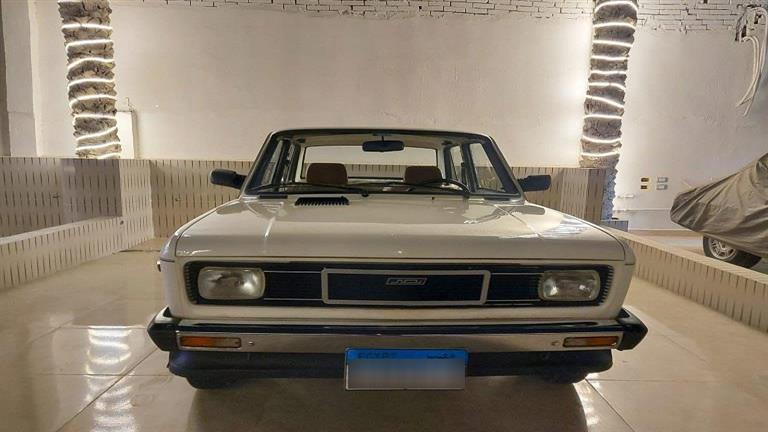The first José Luis Garci film I saw in the cinema was the third he made, the green meadows, released in 1979. I loved it. I thought it was an original and different comedy, which portrayed very well some of the hopes, dreams and disappointments of a part of the Spanish middle class at the time.
When I saw the green meadowsI was a 16 year old teenager who went to the cinema whenever he could in his native Mallorca, I bought the magazine every week frames, he followed the serial encyclopedia El Cine de Salvat – to which, among other things, Garci had collaborated – and fantasized about the idea of becoming a director one day. Among my favorite directors at that time were directors such as Stanley Kubrick, François Truffaut, Luis García Berlanga, Stanley Donen or Roman Polanski, in a list in which more foreign and Spanish names would gradually be included, including José Luis Garci, because of the excellent impression he had made on me the green meadows it would be confirmed later El crack, Start over, The crack 2, session continues y Subject approvedall shot in the 1980s.
In that first phase Garci was also one of the main cinematographic reporters of democratic Spain which was to be born in the mid-seventies and which would be consolidated in the following decade. In a way, the country was reflected in his first two films, Subject on hold y Alone in the morning, was that of the Transition. In both films the main characters were born around the 1940s, so they were still young at the time, but even so they already showed a certain disenchantment, certainly much more vital or existential than social or political.
Despite this disenchantment, those same young people have not closed the doors to the hope of a better future for all, or at least for most of us. So the great José Sacristán hinted in the extraordinary final monologue of Alone in the morning, whose lucid reflections on how our life should be are still as current today as they were then. A little darker was, perhaps, the vital perception that detective Germán Areta – the unforgettable Alfredo Landa – had of our daily reality in those years, especially when he was in The crack 2 About his professional work he said: «Well, it’s a bad job like any other. I sleep little, walk a lot and I don’t like what I see at all.
That first stage would end with Subject approved, since from the 90s all of Garci’s films would be set in the past and, in some cases, would also derive from literary adaptations. This second phase, which I consider equally admirable, is composed Lullaby, The luminous wound, Not no, You are that, story of a kiss, Tiovivo c. 1950, Ninetto, Sunday light, can blood, Holmes and Watson. Madrid days y zero crack.
Since both phases are apparently so different thematically and stylistically, I would say that basically they are not, since there are elements and qualities that were already present in Subject on hold and which continued to be present in the rest of Garci’s filmography. A first common feature in almost all of his films would be that, for one reason or another, most of the characters who appear in his films are almost never overly cheerful or happy, not even in his captivating comedies or goodies. choral stories. The only exception in this sense would be, perhaps, the wonderful dance in common that appears in the credits of Tiovivo c. 1950.
Another distinctive feature of her cinema would also be that few directors have shown and photographed Madrid with the charm and affection with which Garci made it, with its sunrises and sunsets, its streets and avenues, its spaces. full of people or practically deserted, its palaces and cafes, its radiant mornings or its nocturnal environments, with a background that is almost always nostalgic or melancholy. That love for Madrid was compatible with his love for Asturias as well, since the beautiful Asturian cities and landscapes have also occupied a very relevant space in many of his films. In this sense, Garci’s entire cinematographic work could be defined, perhaps, with the title of one of the most beautiful essays by the master José Ortega y Gasset: From Madrid to Asturias or both landscapes.
A third and final essential component in several films by the Madrid director was the pre-eminent presence not only of cinemas and everything related to the seventh art, but also of books, cars, cigarettes, football matches, boxing matches, programs radio, old songs and, above all, Christmas parties, which on many occasions have been almost another protagonist of his films.
Beyond his specific facet as a director, de Garci would also have highlighted and praised his work as a screenwriter, producer, editor, writer or columnist, as well as his participation in various radio and television programs, such as the mythical This cinema is so big! in the past or the excellent Classics Nowadays.
As a faithful and constant admirer of Garci, I would like him to continue shooting new projects in the future, even if he himself seems to have almost completely excluded him, at least for now. The luck that his followers have is that, fortunately, we can continue reading him, listening to him or watching him talk about cinema or other great passions of him. And of course we can also review his films. I do this often, although I’m sure you will understand that there is still a very special place in my heart today – warm, loving and tender – for The green meadows.
José Maria Aguilo is a journalist.
–


